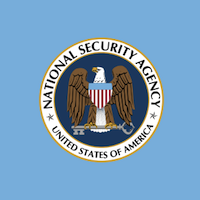From “AT&T Helped N.S.A. Spy on an Array of Internet Traffic” in The New York Times:
Fairview is one of its oldest programs. It began in 1985, the year after antitrust regulators broke up the Ma Bell telephone monopoly and its long-distance division became AT&T Communications. An analysis of the Fairview documents by The Times and ProPublica reveals a constellation of evidence that points to AT&T as that program’s partner. Several former intelligence officials confirmed that finding.
[…]
In September 2003, according to the previously undisclosed N.S.A. documents, AT&T was the first partner to turn on a new collection capability that the N.S.A. said amounted to a “ ‘live’ presence on the global net.” In one of its first months of operation, the Fairview program forwarded to the agency 400 billion Internet metadata records — which include who contacted whom and other details, but not what they said — and was “forwarding more than one million emails a day to the keyword selection system” at the agency’s headquarters in Fort Meade, Md. Stormbrew [another program] was still gearing up to use the new technology, which appeared to process foreign-to-foreign traffic separate from the post-9/11 program.
In 2011, AT&T began handing over 1.1 billion domestic cellphone calling records a day to the N.S.A. after “a push to get this flow operational prior to the 10th anniversary of 9/11,” according to an internal agency newsletter. This revelation is striking because after Mr. Snowden disclosed the program of collecting the records of Americans’ phone calls, intelligence officials told reporters that, for technical reasons, it consisted mostly of landline phone records.
One of the other issues discussed is that the NSA has been scooping a lot of emails (or fragments of emails) of people unrelated to intended searches because the emails are transmitted in blocks of information pieces before being re-assembled at the destination, so the target emails are probably mixed with everyone else’s emails at the interception points.
There was also a lot of discussion in the article about how AT&T and Verizon were making infrastructural repairs for the NSA overseas.



